The Evolution of Annual Calendars in the World of High Complication Watches
Exploring the artistry and innovation behind annual calendars, and why they deserve more recognition in the realm of haute horlogerie.
“The test of the machine is the satisfaction it gives you. There isn’t any other test. If the machine produces tranquility it’s right. If it disturbs you it’s wrong until either the machine or your mind is changed.” — Robert Pirsig
Have you ever scored a 99 on an exam? You were so close to perfect that it almost felt like a failure.
Perspective is a tricky thing in life. One person’s hero can be another person’s villain. A score of 99 can be just as valuable as a 100, and an annual calendar watch can have the same allure and appreciation as a perpetual calendar if we shift our perspective.
That’s how I view annual calendars in comparison to perpetual calendars. While both are beautiful works of horology, annual calendars can feel lesser, like a shortcoming in watchmaking, simply because they are not perpetual. My hope is to change this perception. Annual calendars are often overlooked compared to their perpetual counterparts and deserve their own place in the spotlight of watchmaking.
Some Background on Perpetual Calendars
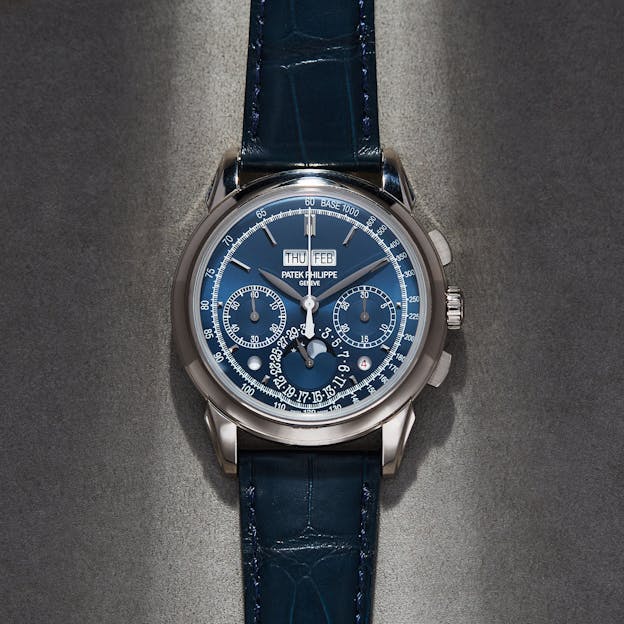
The first known perpetual calendar was a pocket watch created by Thomas Mudge in 1762. Patek Philippe patented the first perpetual calendar movement to be used for a wristwatch in 1889. Later in 1925, this technology was applied to craft Patek’s inaugural perpetual calendar wristwatch, which was commissioned by a collector and took two years to complete.
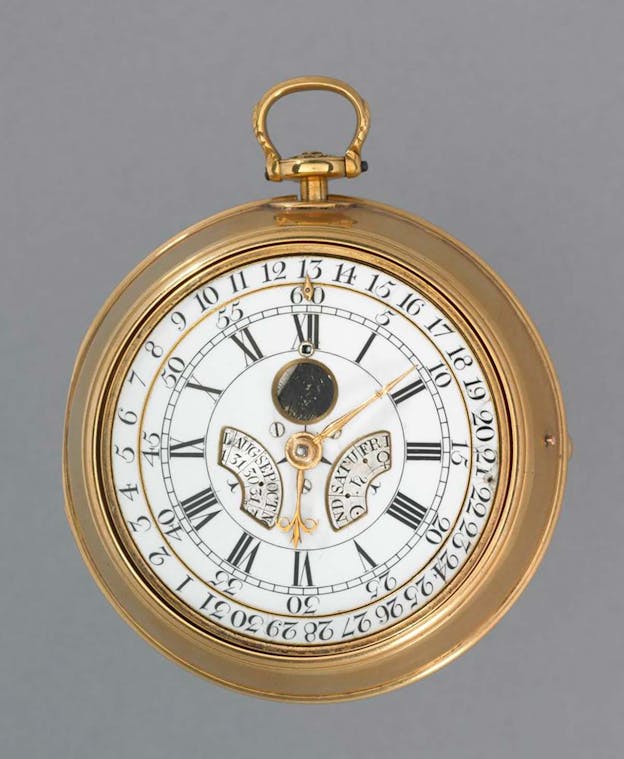
In 1929, Breguet revolutionized watchmaking with its groundbreaking Ref. 4244, an instantaneous perpetual calendar featuring approximately 100 intricately crafted components. Its innovative “jump” system synchronized all calendar functions simultaneously. This masterpiece was purchased for 11,000 CHF in 1934 and later resold at a Christie’s auction in 2011 for an astounding $475,618.

Despite Breguet’s achievement the world of perpetual calendars belongs to Patek Philippe. In 1937, the brand became the pioneer of retrograde perpetual calendar wristwatches, followed by the release of the first series-produced perpetual calendar wristwatch in 1941, with the ref. 1526. It also made history in 1944 by introducing the first sweep seconds perpetual calendar wristwatch, identified as ref. 1591. By 1951, the brand serially produced this complication with ref. 2497. The introduction of a self-winding perpetual calendar began in 1962 with the iconic ref. 3448, a milestone that would not be matched by another Swiss watchmaker for a full 16 years. Additionally, Patek Philippe was the first to develop a perpetual calendar chronograph in 1941. (If you’re not first you’re last Ricky Bobby).

In short, a perpetual calendar, if consistently wound, never needs to be reset. It accounts for the shortened month of February, the four 30-day months, and leap years. However, there are exceptions, notably the year 2100, which the Gregorian Calendar does not consider a leap year. Leap years are generally years divisible by 4, except for centennial years not evenly divisible by 400. Thus, the years 1700, 1800, 1900, and 2100 are not leap years, while 1600, 2000, and 2400 are. This past year we had the release of the IWC Eternal Calendar which accounts for these variations, but that is for another story.
The allure of the perpetual calendar lies in its ability to remain accurate without resetting. However, keeping a watch continuously wound can also be a burden, and anyone who has reset a perpetual calendar knows how tedious it can be.
The Annual Calendar Dilemma
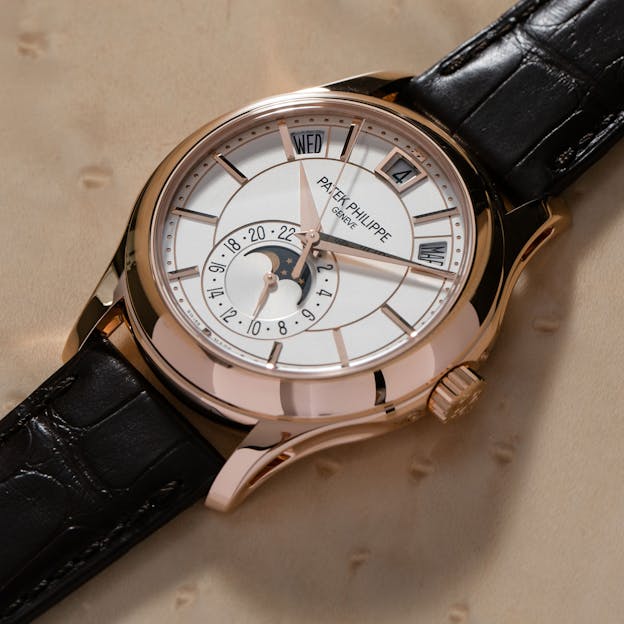
Annual calendars, as their name implies, need to be reset annually. However, they account for the varying lengths of the months throughout the year, except for February. At a dramatically lower price point, this minor inconvenience feels like a fair trade-off. Annual calendars provide a value proposition for those who desire a complicated calendar watch (day, date, month) at a more attainable price.
Annual calendars can offer the same level of satisfaction, if not more, than perpetual calendars.
I believe you develop relationships with your watches as you collect and wear them. Every morning, when I put on my Speedmaster, I relish winding it. The clicking of the gears, watching the second hand spring back to life, and knowing I am giving this inanimate object life creates a different bond than picking up a watch that is already ticking. Perpetual calendars are incredible feats of engineering, but once set and consistently wound, you can forget about them. In contrast, an annual calendar is like an old friend you only catch up with once a year—in February, to be precise. The conversation picks up right where you left off, and you never miss a beat.
The First — The Ref. 5035
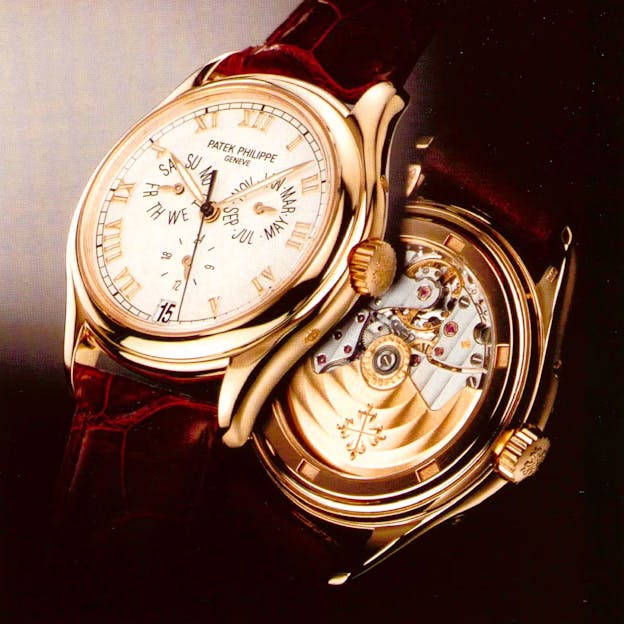
What is essentially a simplified perpetual calendar was first introduced as a wristwatch in 1996, with the Patek Philippe Ref. 5035. Technically speaking, the annual calendar was a significant achievement. Despite some collectors initially thumbing their nose at it, as time went on, perceptions have shifted.
The 70-plus years between the introduction of the perpetual calendar watch and the annual calendar watch is open to speculation. Patek Philippe likely noticed a substantial gap in their catalog between entry-level time-only watches (like the Calatrava) and the Ref. 3940 perpetual calendar.
As Jack once told me, “In for a dime, in for a dollar when it comes to making calendars that don’t need to be adjusted at the end of the month.”
Interestingly, Patek’s first annual calendar had a higher parts count than their perpetual calendar. Despite that fact, annual calendars are said to be more robust and less prone to damage than traditional perpetual calendars. One might question why this is the case; despite the higher parts count, annual calendars should be easier to construct since they don’t require an extra cam for tracking leap years.

When the annual calendar was introduced, Patek faced criticism from collectors who felt it represented a simplification of the classic perpetual calendar. This perception offers another explanation as to why annual calendars didn’t appear until 1996.
So why 1996 then? This was a transformative time in the watch world, as the quartz crisis faded and the internet began democratizing watch education.
Amid this tumultuous era for luxury watchmakers, Philippe Stern led Patek Philippe with foresight, resisting the temptation to chase quick profits through overly complex timepieces. Instead, Stern reduced production of complicated watches to maintain exclusivity. To meet market demand, Patek Philippe introduced the 5035 Annual Calendar, powered by the innovative Caliber 315 S QA. Stern referred to it as a “practical complication,” cleverly built upon the basic date function.
The Caliber 315’s architecture, highlighted in Europa Star (1996, issue 218) and in Collectability’s comprehensive timeline, replaced traditional calendar mechanisms with wheels and pinions. A 24-hour wheel with two fingers advances the date, distinguishing between 31- and 30-day months. For 30-day months, an additional finger ensures a seamless transition from the 30th to the 1st over four hours.
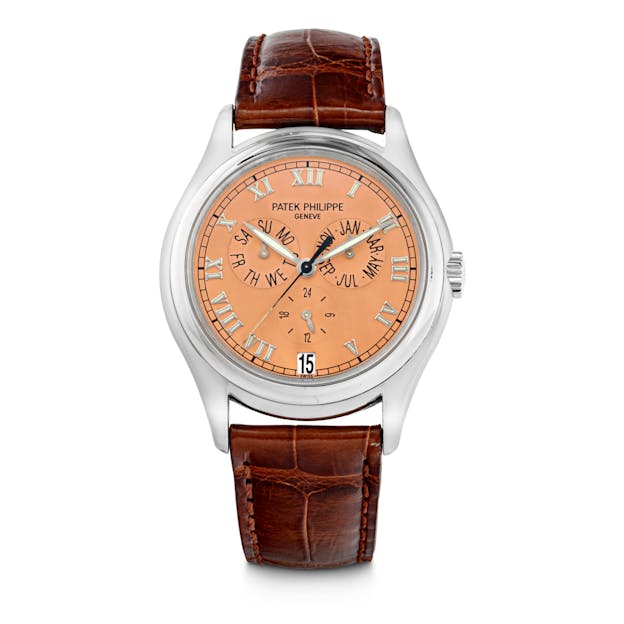
Setting the calendar involves three discreet correctors (to be operated with a specially designed stylus) on the case sides, allowing users to adjust the date, day, or month displays as needed—ideally, only once a year on March 1st. Notably, the Caliber 315 displays the date through an aperture at 6 o’clock, accompanied by central seconds and a 24-hour subdial. The design of the 5035 is pure ’90s.
John Reardon, the founder of Collectability.com, remarked in an interview with Hodinkee, “Although at first the Ref. 5035 was met with ‘shock and awe’ by the collecting community, it soon became a staple in the Patek Philippe line and remained in production for almost a decade. It has aged well and is now recognized as one of the most quintessentially 1990s designs, both aesthetically and mechanically. Interestingly, the word ‘value’ has become synonymous with the Ref. 5035, and this holds true today as much as it did 25 years ago.”
Evolving the Ref. 5035

The 5035 went on to win Swiss Watch of the Year from Montre Passion. By 1998, the Ref. 5036 introduced a power reserve indicator and moon phase. Eventually, production of the 5035 ended in 2004, and the model was replaced by the ref. 5146, featuring an updated case size of 39mm.
The ref. 5146 is the Patek Philippe annual calendar to own. At 39mm, it strikes the perfect size, allowing the proportions of the subdials to be more visually appealing than its predecessors, while keeping the original aesthetic. Additionally, the inclusion of a moon phase—one of my favorite and most romantic complications—elevates this timepiece. It is close enough to the original but also has its own identity. There are a few other annual comp variations which should without-a-doubt be given consideration as “the one to own.” However, this is my pick.
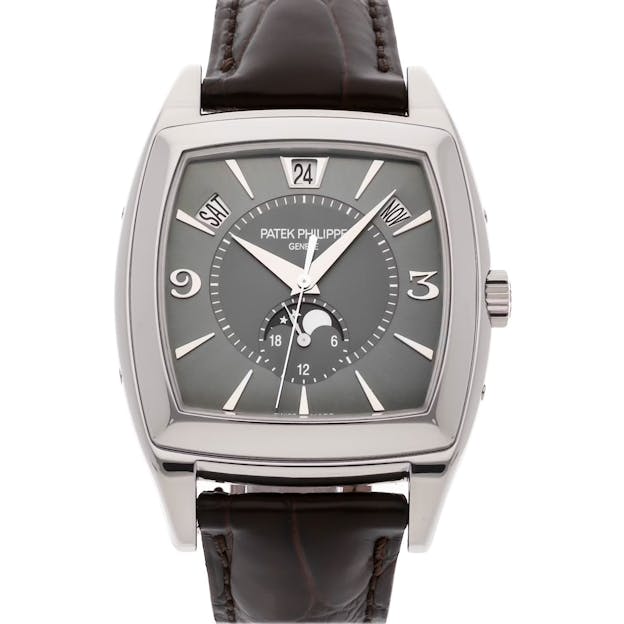
A real outlier within the annual calendar line that I feel I must touch on is the ref. 5135 Gondolo Calendario. It was produced with a tonneau-shaped case and a new self-winding movement caliber 324/205. It also featured a new dial layout with an arched arrangement of month, day, and date in three separate apertures. This layout would later be incorporated into a handful of other annual calendar designs. But the Gondolo holds a special place in Patek’s history. The name comes from the brazilian distributor Gondolo & Labouriau, who Patek made an exclusive family of timepieces for during the early part of the 20th century. (You may remember a famous picture of the “Gondolo Club”).

The new caliber featured a handful of innovations. It beat at a frequency of 4 hz or 28,800 vibrations per hour which assured a steady rate but also prevented oil from being tossed out of the bearings. As well, to improve efficiency the 21K central rotor was enlarged for more winding power. The traditional two-arm construction of the Gyromax was replaced with a four-arm design with only four weights adding greater torsional rigidity and simplifying adjustment. Finally the toothing profile was redone to optimize the transition of power from the barrel to the balance enhancing the accuracy and reliability.
Patek Philippe continued to refine its annual calendar design. One standout example is the sleek ref. 5960, which seamlessly merged the annual calendar with a flyback chronograph, wrapped in a sporty, modern aesthetic. This would later evolve into the ref. 5905, another one of my all-time favorite Patek models. (I may have too many).
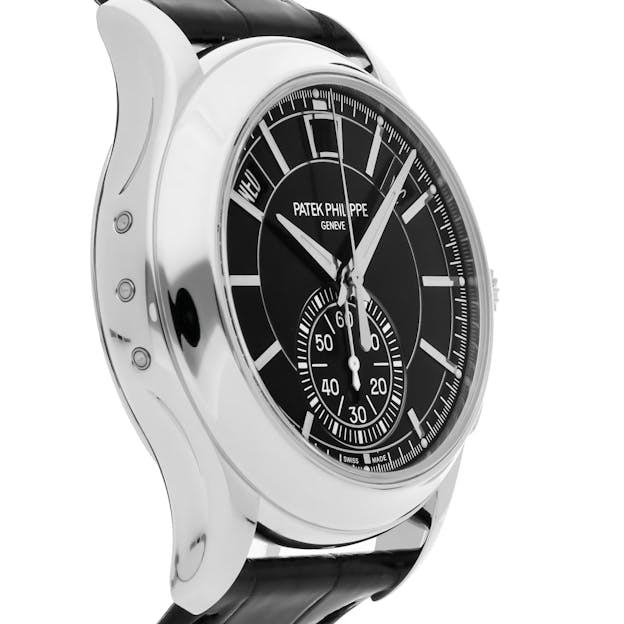
Simultaneously unveiled in 2006, the ref. 5396 presented a striking contrast, elegantly integrating the annual calendar within a classic Calatrava case. The dial’s symmetrical layout featured twin apertures for day and month displays, while a smaller window at 6 o’clock echoed the design language of earlier models, such as the pioneering ref. 5035 and the venerable ref. 3448.
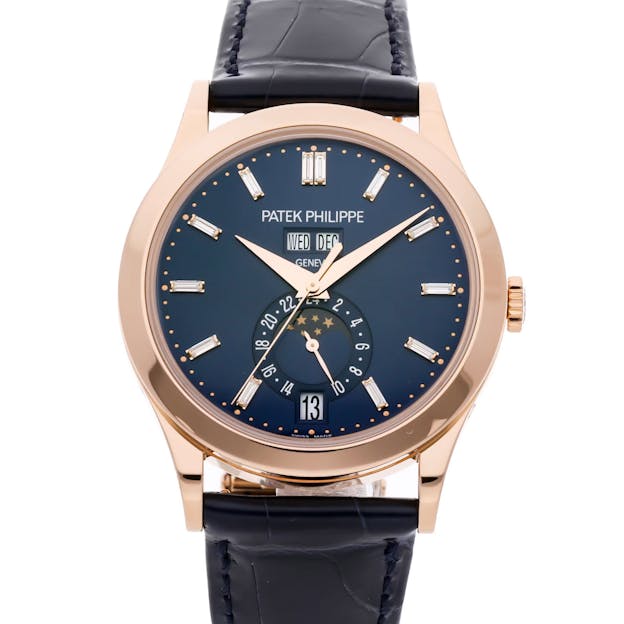
The 5396 offers a refined, classic take on the annual calendar and is likely the most legible, though opinions will always vary. The design also echoes that of the original perpetual calendars closely resembling the ref 1526.
Resetting the Perception of Annual Calendars
My argument for annual calendars is that they are the true value proposition when it comes to high complication watches.
Annual calendars are vastly underrated gems in the world of horology. More affordable than their perpetual counterparts, they still maintain the same provenance and reverence that high-complication watches command. The introduction of annual calendars into many brands’ lineups post-1996 marked the beginning of what we now recognize as haute horology—a time when brands not only understood what collectors wanted but also made it accessible in the realm of luxury watches. In embracing annual calendars, we celebrate a beautiful blend of craftsmanship and practicality, proving that complexity doesn’t always have to come with a lofty price tag.


